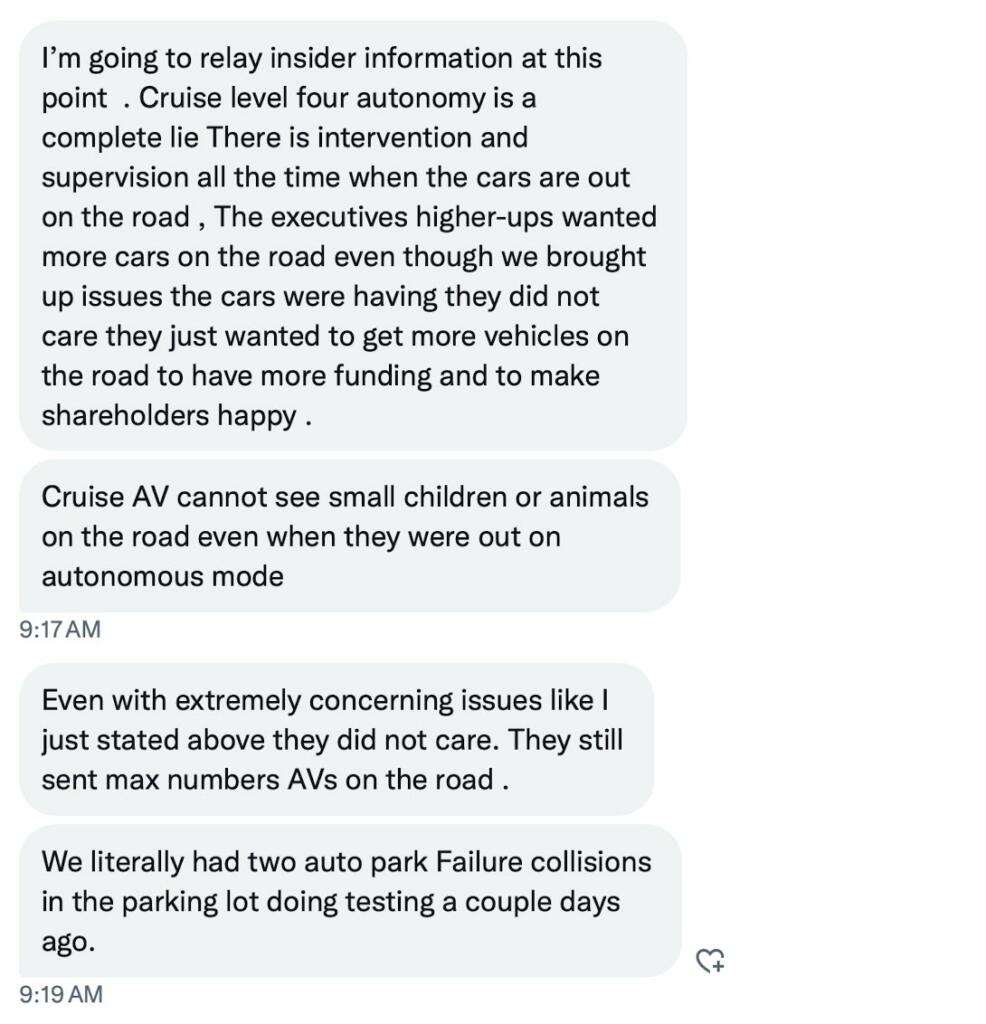Cruise CEO Kyle Vogt confirmed reports that the self-driving robotaxi maker needs regular human intervention to help them make sense of the road, yet he is downplaying the severity.
A New York Times story cited unnamed Cruise employees claimed the company’s robotaxis required human help every 2.5 to five miles and had a support staff so large there were 1.5 workers per Cruise vehicle.
Is Waymo Doing the Same Thing?
As of August 25, 2023, Waymo and Cruise have reported 102 crashes involving their vehicles in San Francisco. These crashes were mostly low-speed and did not pose a serious safety risk. Waymo robotaxis reported 35 more crashes in San Francisco than Cruise since the beginning of 2022, according to publicly available reports from the California Department of Motor Vehicles. But Cruise had far more incidents involving injuries. Waymo and Cruise reported 103 and 68 collisions in San Francisco since January 2023.
Waymo employs about 2,500 people. Cruise had 1800 employees as of 2020.
Tesla FSD Can Go Next Level Without Going Driverless Robotaxi
Tesla’s FSD (fullself-driving) has interventions but the human driver has to be there. Tesla FSD enables the driving experience to be more comfortable. Tesla FSD does not have to reach driver replacement to be profitable. Tesla FSD is already profitable and making it driving safer and more comfortable can increase usage rates to 50% or more. Half of the world’s drivers are below average drivers.
Cruise AVs are being remotely assisted (RA) 2-4% of the time on average, in complex urban environments. This is low enough already that there isn’t a huge cost benefit to optimizing much further, especially given how useful it is to have humans review things in certain situations.
The stat quoted by NY Times is how frequently the AVs initiate an RA session. Of those, many are resolved by the AV itself before the human even looks at things, since we often have the AV initiate proactively and before it is certain it will need help. Many sessions are quick confirmation requests (it is ok to proceed?) that are resolved in seconds. There are some that take longer and involve guiding the AV through tricky situations. Again, in aggregate this is 2-4% of time in driverless mode.
In terms of staffing, we are intentionally over staffed given our small fleet size in order to handle localized bursts of RA demand. With a larger fleet we expect to handle bursts with a smaller ratio of RA operators to AVs. Lastly, I believe the staffing numbers quoted by nyt include several other functions involved in operating fleets of AVs beyond remote assistance (people who clean, charge, maintain, etc.) which are also something that improve significantly with scale and over time.
A Cruise worker who was laid off today shared this information with me pic.twitter.com/lJpc2R2y3c
— Whole Mars Catalog (@WholeMarsBlog) November 9, 2023


Brian Wang is a Futurist Thought Leader and a popular Science blogger with 1 million readers per month. His blog Nextbigfuture.com is ranked #1 Science News Blog. It covers many disruptive technology and trends including Space, Robotics, Artificial Intelligence, Medicine, Anti-aging Biotechnology, and Nanotechnology.
Known for identifying cutting edge technologies, he is currently a Co-Founder of a startup and fundraiser for high potential early-stage companies. He is the Head of Research for Allocations for deep technology investments and an Angel Investor at Space Angels.
A frequent speaker at corporations, he has been a TEDx speaker, a Singularity University speaker and guest at numerous interviews for radio and podcasts. He is open to public speaking and advising engagements.


Cruise did have interesting LIDAR technology for making the sensor cheaper, which is a critical issue for LIDAR based FSD systems. That was their big shtick after all. Not the autonomous part.
It’s pretty common for frauds in the business world to start out as legit businesses. And then things just don’t work out for one reason or another, and the people running the business start cutting corners, convinced that if they can just keep it going by hook or by crook, they can come out the other side and be a real profitable business.
And then they just get deeper and deeper, and eventually you see headlines.
That appears to be what’s been going on here. The tech just is NOT there yet for driverless cars, not in the city, anyway. Maybe on limited access highways without construction… But they got ahead of the tech, and wouldn’t shut down when it turned out to not work.
This is such a natural progression that, when it does happen, you have to make an example of the people involved, to set up enough fear to keep people from going down that road. Time to nail Cruise to the wall.
There was an earlier Cruise incident were multiple cruise cars got stuck on one street due to street fair even though the road was open to traffic. and it took hours fro Cruise to address the issue. Later publicly they stated the the cars lost wireless internet and stopped a result.
That explanation didn’t make sense to me but now it does. The car had an issue and couldn’t get a human to fix it. Then another, another and another. Cuise simply didn’t know about the problem until the police called them. It was a natural trap. wireless didn’t work in the area and all the software could not handle the foot traffic.